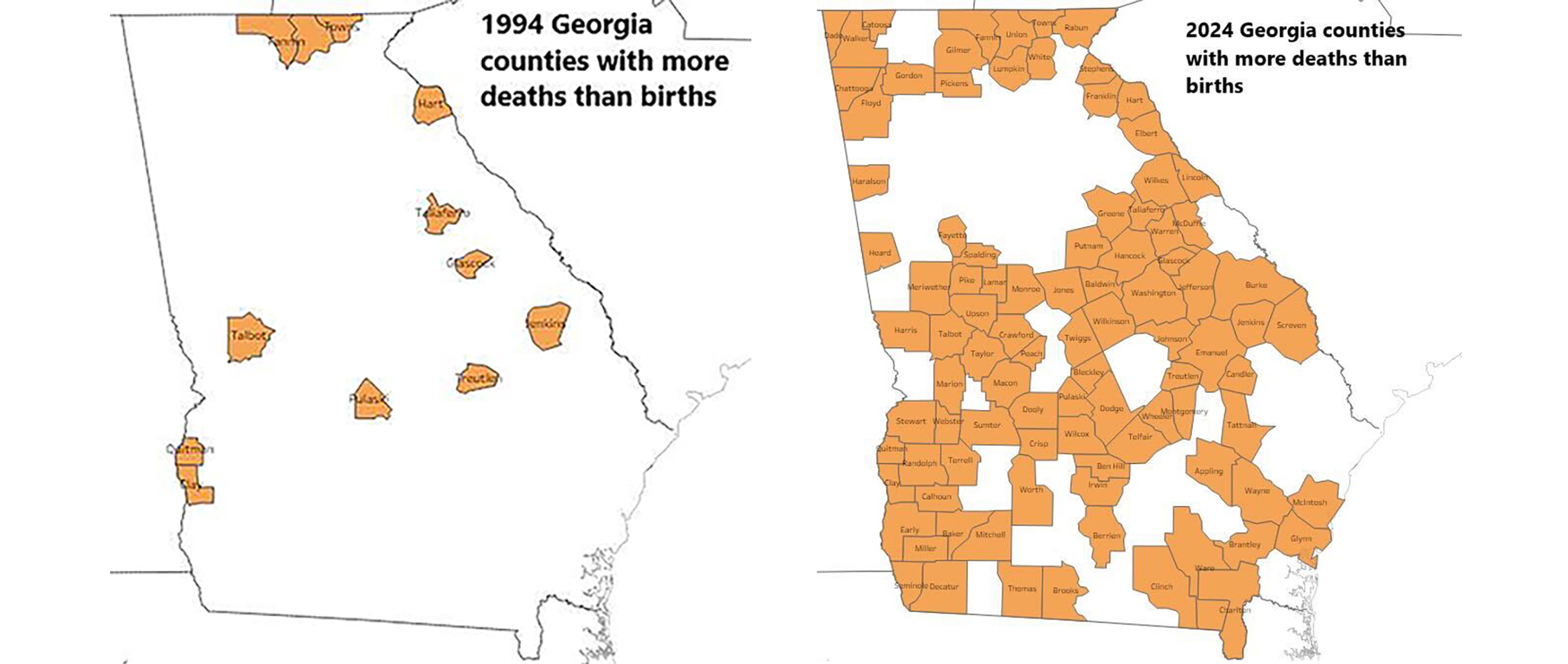Metro Atlanta and rural Georgia are inextricably linked by an uneasy bargain
Re: “Atlanta hasn’t stopped growing. But its momentum is at risk,” by David Plazas, AJC opinion editor.
David Plazas’s recent column painted a clear-eyed portrait of Atlanta: a booming metro with world-class assets and very real challenges. But as I read it, what stood out most was what wasn’t there.
Left in the shadows, as it so often is, was rural Georgia, a vast swath of our state whose fortunes, for better or worse, are intimately tied to Atlanta’s own.
Let’s be blunt about the math. Based on data from the U.S. Census Bureau, the Internal Revenue Service, the U.S. Bureau of Economic Analysis and the Georgia Department of Community Health, the 29-county Atlanta Metropolitan Statistical Area (MSA) was in 2020:
- Home to 58% of Georgia’s population
- Reported 69% of the state’s adjusted gross income
- Generated 70% of the state’s gross domestic product
- Incurred nearly 75% of our federal tax liability
Meanwhile, it consumed less than half — 48% — of the state’s Medicaid benefits.
As Atlanta grows, rural areas shrink and opportunities there vanish
Step beyond the suburban sprawl and things get stark. Take away Atlanta, and what’s left — the other 130 counties — would, if chartered as a state, rank dead last in the nation for per capita income and next-to-last for educational attainment.

This is not hyperbole. It’s a devastating measure of how the prosperity generated in and around Atlanta has failed not simply to reach the state’s most rural areas, especially south of the fall line, but has, in fact, developed a gravitational pull that sucks much of talent and economic energy out of the other Georgia.
And yet, the irony runs deep. Even as metro Atlanta chokes on its own growth — with traffic gridlock, housing crunches and the stresses of expansion — it is, by any measure, heavily subsidizing rural Georgia. The tax dollars generated by Atlanta’s economic dynamism are what help keep rural schools running, hospitals afloat (if only barely) and social services operational, even as those efforts seem increasingly Sisyphean. Atlanta’s fortune, in other words, bankrolls rural Georgia’s survival.
All of this isn’t to pit one against the other. Rather, it’s to spotlight the fact that you cannot understand Georgia’s present or future by looking only at Atlanta’s skyline, or only at the boarded-up storefronts and weather-beaten homes in small towns.
Our fates are unavoidably linked, but the bargain is an uneasy one. In too many rural counties, population loss, shrinking tax bases and vanishing opportunities have become the new normal. In 2024, 94 of Georgia’s 159 counties reported more deaths than births — and that represented an improvement over the 2021 COVID spike of 124 counties in that unhappy category.

Solutions must be beneficial to both rural and urban areas
The brightest young people leave for Atlanta and rarely return. Institutions of every type — public and private, schools, hospitals, businesses — are struggling to survive. Meanwhile, the rest of the state leans ever harder on Atlanta’s economic might, even as metro leaders grapple with the challenges prosperity itself brings.
The relationship is not sustainable, not for Atlanta, nor for rural Georgia. There is no long-term future in which one thrives while the other withers. And yet for decades, no state leader has been willing or able to bridge the gap: Not by investing deeply enough to turn rural trends around, nor by addressing the political “third rail” of real, structural reform.
I’m tempted to close by suggesting that the fates of Metro Atlantans and rural Georgians are inextricably linked — that we all rise or fall together. But I’m not sure that’s true anymore. Thanks to decades of political and policy failures, most of rural Georgia is staring into a socioeconomic abyss, while metro Atlanta, under the thumb of a rural-dominated state government, is compelled to keep throwing good money after bad.
Neither situation is sustainable. The real question is whether the next generation of Georgia’s leaders will have the wisdom to chart new solutions — and, just as importantly, the political courage to actually pursue them. Without both — and soon — I fear we’re barreling toward a reckoning, fiscal and political, that could fracture the state even further.
I wish I could offer more optimism, but, at this point, hope alone feels like a luxury.
Charlie Hayslett of Decatur is a mostly retired journalist and public relations counselor now working to finish “Trouble in God’s Country,” a book about the costs and consequences of the death of rural Georgia. He blogs on these issues at www.troubleingodscountry.com.


